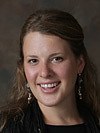This Land is Your Land
Woodie Guthrie’s “This Land is Your Land” is perhaps the most celebrated love song for the varied wonders of American terrain. Although its verses reveal Guthrie’s love for the land, the song’s title and catchy refrain, “this land was made for you and me,” express how many of us relate to the land: as something we possess.
In contrast, Parshat Behar offers a very different paean to the land, as it describes the precepts of Shmitah (the sabbatical year). It states that when the people arrive in the Land of Israel, the land must observe a Sabbath—a rest. The people may “work” their land for six years, but during the seventh year, they are forbidden to prune or sow, and can eat only what the land produces naturally.
Of all of the details of Shmitah, what stands out to me is that it is not the people who are first commanded to observe Shmitah, but rather the land itself![1] In fact, the mitzvot incumbent upon the people are presented only after and secondary to the declaration mandating the land’s Sabbath, dictating that the Israelites act in a way that enables the land, personified, to rest.
This notion challenges the way so many of us understand ourselves in relation to the land, how we treat it, and what we derive from it today. We generally assume that humans, in a position of power, can use the land as an important commodity from which to procure the resources we desire. But Behar pushes us to see our relationship with the land as we see ourselves: living, commanded by God and deserving of rest. With that, the land and humans are equalized, allowing us to move beyond our perception of land as something only to be controlled or dominated and into a symbiotic relationship that is sustainable for both of us.[2]
The organic and holistic link between humanity and the land is encoded in our earliest history and understanding of our origins. In the Torah’s second creation narrative,[3] God creates the land and then a human, made literally of the earth, to fill the need for the land’s care.[4] In this story, far from being permitted to exploit the land, humans were created from the land and charged with protecting it. The interconnectedness of humans and the land is emphasized again with the Torah’s depiction of Cain’s murder of his brother. Here, even though the crime reflects the sinful actions of a human being toward another, the land also suffers; it is personified as swallowing Abel’s blood and becomes toxic itself, mirroring the death of Abel.[5] This powerful early example reminds us of the ways in which we and the land are intertwined.
Unfortunately, modern economic forces make sustaining a holistic, interconnected relationship with the land notably difficult. Our insatiable desire for natural resources like gas, minerals and water has depleted the land, especially in the Global South, where much of the world’s relatively untouched territory remains. The traditional societies who live holistically and symbiotically on these lands are finding their ways of life threatened by the encroachment of development that seeks to possess the earth and subdue it.
Take, for example, the Garífuna people of Central America, who represent a significant percentage of the population along the Caribbean coast. For over 200 years, the Garífuna have subsisted on the products of their local eco-system, taking what they need while ensuring that the land is not depleted. The Garífuna live harmoniously with the land, relying on it not just for food, but also for maintaining their collective religious and cultural identity and practices.
Unfortunately, in recent years, this land has been cultivated by people who fail to view it as an equal partner. The Garífuna ecosystem is suffering at the hands of erosion and destruction, deforestation of the mangroves, and business investments in large palm oil plantations along Honduras’s northern coast. With the ecological balance upset and the soil depleted, Garífuna communities are experiencing food insecurity for the first time.[6] And because their very identity is connected to the land, their entire culture is at risk of disappearing.
Parshat Behar can teach us to see the land not as our possession, but as an extension of ourselves—together dynamic partners in assuring that God’s entire creation flourishes. If we reorient our view, perhaps we will see a turn in the tide of resource depletion and imbalance that persists throughout our world. Rather than viewing the land as “made for you and me,” we might begin to see it as made alongside us and embodying the same Divine image that makes humanity and the universe holy.
[1] Vayikra 25:2.
[2] Some might say Behar suggests that the land sits at even a higher place than people, especially if we consider God’s declaration: “…for the land is Mine; you are but strangers dwelling with Me.” (Vayikra 25:23)
[3] The first two chapters of Breishit describe two different versions of the creation story. The first story (Breishit 1:1-2:4), describes God’s creation of the earth in seven days. This narrative features a notably hierarchical model in which humanity’s purpose is to “fill the earth” through reproduction and “subdue” it. The second narrative (Breishit 2:5-2:24), is the one from which the rest of the Torah narrative unfolds, and focuses on creation as manifest in the Garden of Eden. It describes the role of the human as more partnered and organic with the land.
[4] Breishit 2:5-7.
[5] Breishit 4:11. (“And so, cursed shall you be by the soil that gaped with its mouth to take your brother’s blood from your hand.”)
[6] Ramor Ryan, “The Last Rebels of the Caribbean: Garifuna Fighting for Their Lives in Honduras,” Upside Down World, 27 March 2008. http://upsidedownworld.org/main/content/view/1195/1/. To learn more about the rights of indigenous people in Honduras, see Rebecca Fries and Luis Diaz-Alberini, “Defending the Human Rights of Indigenous People in Honduras,” Global Voices, 10 June 2011. http://blogajws.org/blog/2011/06/10/defending-the-human-rights-of-indigenous-people-in-honduras/

